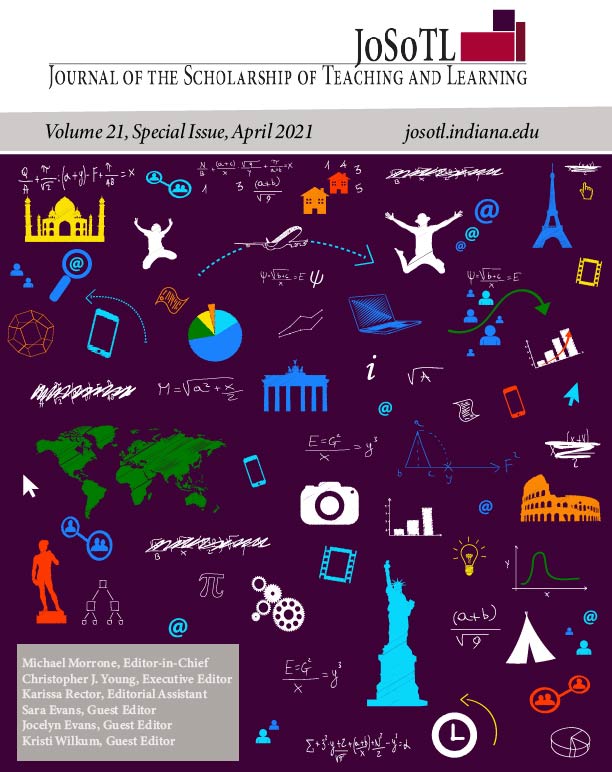Undergraduate Research Embedded Across Course Levels and Types Through Scaffolded Projects
Main Article Content
Abstract
This article explores how to embed an undergraduate research project within a course and summarizes the student experience in courses including undergraduate research. The authors specifically focus on how to modify and alter materials to fit with different course foci and different course levels. We have been leading an interdisciplinary, multi-year research project for the past four years. During that time, we have scaffolded a research project from year to year. Each piece of the project has been embedded within a course. However, the specific course level and content focus has changed from year to year. By embedding a research project within a class, faculty members have a unique opportunity to give their students a high-impact experience and further their own research simultaneously. We have successfully mentored and supervised students in the following formats: a freshman interdisciplinary honors course, two different undergraduate criminal justice courses made up of 5-10 students that were focused around criminological theory testing, individual directed study projects with graduate students, a 30-40 person upper level criminology research methods course, and a freshman individual directed study research project. Throughout all of these modalities, we have kept a core type of course design and course requirements but modified the components and grading criteria as needed for the type and level of course. We will summarize and discuss student assessment data both on their experience in the course as well as their achievement of student learning outcomes.
Downloads
Article Details

This work is licensed under a Creative Commons Attribution 4.0 International License.
- Authors retain copyright and grant the Journal of the Scholarship of Teaching and Learning (JoSoTL) right of first publication with the work simultaneously licensed under a Creative Commons Attribution License, (CC-BY) 4.0 International, allowing others to share the work with proper acknowledgement and citation of the work's authorship and initial publication in the Journal of the Scholarship of Teaching and Learning.
- Authors are able to enter separate, additional contractual agreements for the non-exclusive distribution of the journal's published version of the work (e.g., post it to an institutional repository or publish it in a book), with an acknowledgement of its initial publication in the Journal of the Scholarship of Teaching and Learning.
- In pursuit of manuscripts of the highest quality, multiple opportunities for mentoring, and greater reach and citation of JoSoTL publications, JoSoTL encourages authors to share their drafts to seek feedback from relevant communities unless the manuscript is already under review or in the publication queue after being accepted. In other words, to be eligible for publication in JoSoTL, manuscripts should not be shared publicly (e.g., online), while under review (after being initially submitted, or after being revised and resubmitted for reconsideration), or upon notice of acceptance and before publication. Once published, authors are strongly encouraged to share the published version widely, with an acknowledgement of its initial publication in the Journal of the Scholarship of Teaching and Learning.
